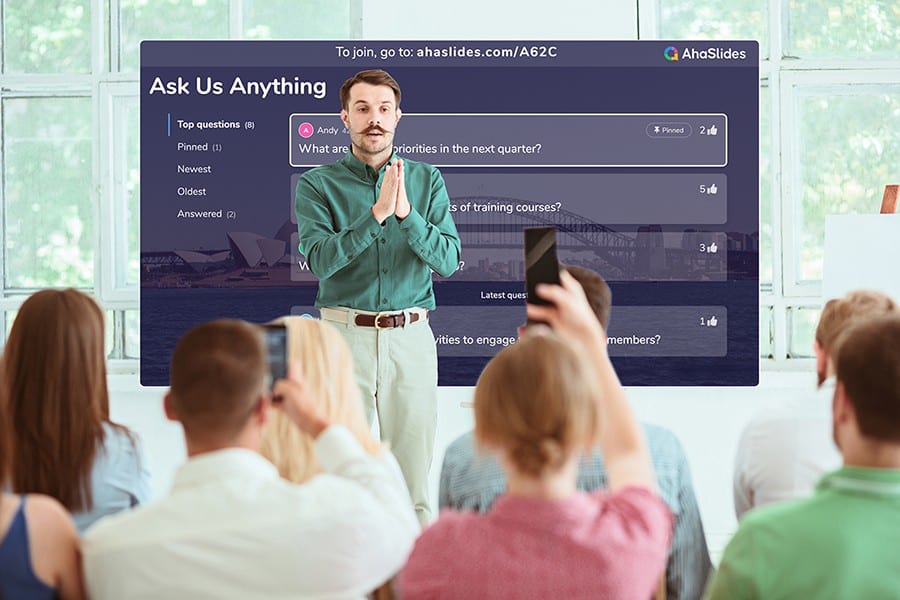
There's no debate here; student debates are one of the best ways to encourage critical thinking, engage students and put learning in the hands of the learners.
They're not just for argumentative classes or budding politicians, and they're not just for smaller or more mature courses. Student debates are for everyone, and they're rightfully becoming a mainstay of school curricula.
Here, we dive into the world of classroom debating. We look at the benefits and various types of student debates, as well as topics, a great example and, crucially, how to set up your own fruitful, meaningful class debate in 6 simple steps.
| How long should a debate be? | 5 minutes/ session |
| Who is the father of debate? | Protagoras of Abdera |
| When was the very first debate? | 485-415 BCE |

Get free student debates templates. Sign up for free and take what you want from the template library!
 a successful student debate in class." width="1024" height="683" />
a successful student debate in class." width="1024" height="683" />
Regular debating in class can profoundly shape both personal and professional aspects of a student's life. Here are a few of the ways in which having meaningful class discussions can be a seriously worthwhile investment in students' nows and their futures:
For the debate structure, firstly, naturally, the first step to holding a school debate is giving them something to talk about. The scope of topics for a class debate is virtually unlimited, even impromptu debate topics. You can provide any statement, or ask any yes/no question, and let the two sides go at it as long as you ensure debate rules.
Still, the best topic is the one that splits your class as close to down the middle as possible. If you need some inspiration, we've got 40 student debate topics down here.
A great way to choose the perfect topic is by gathering preliminary opinions on it within your class, and seeing which one has a more-or-less even number of students on each side:

Though a simple yes/no poll like the one above may do, there are many other creative ways to determine and set up the topic for your students to discuss:
Free Download! ⭐ You can find all of these questions in the free AhaSlides template below. Your students can answer these questions live via their phones, and then see visualised data about the whole class' opinions.
Use this free, interactive template to gather student opinions live in class. Start meaningful discussions. No sign-up needed!
With the topic in the bag, the next step is to form the 2 sides discussing it. In debating, these sides are known as the affirmative and the negative.
Actually, 2 sides are the bare minimum you need. If you have a large class or a sizeable number of students who aren't entirely in favour of the affirmative or the negative, you can expand the learning potential by expanding the number of teams.
Tip #1 💡 Don't punish fence-sitters. While one of the reasons to have a student debate is to make learners more confident in voicing their opinions, there will be times when they're genuinely in the middle ground. Let them occupy this stance, but they should know it's not a ticket out of the debate.
The rest of your class will comprise the judges. They will listen to each point in the debate and will score each team's overall performance depending on the scoring system you set out later.
As for each speaker's team roles, you can set these how you like. One popular format amongst student debates in class is the one used in the British parliament:
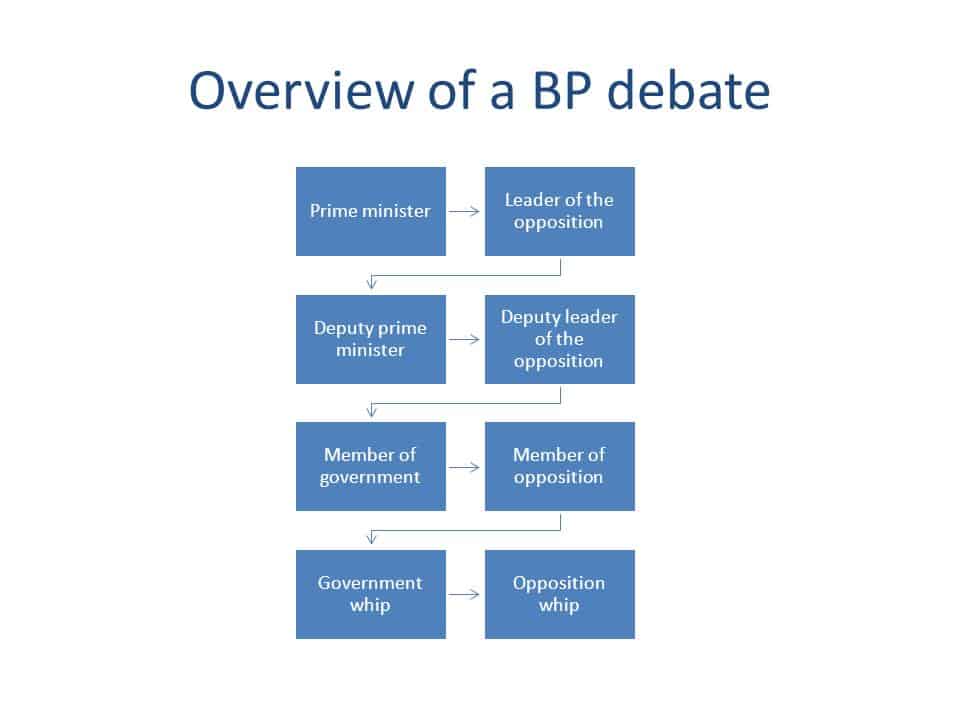
This involves 4 speakers on each team, but you can expand this for larger classes by assigning two students to each role and giving them one point each to make during their allotted time.
There are 3 crucial parts of a student debate that you have to make crystal clear before you begin. These are your barricades against the kind of anarchical debate you may experience in the actual British parliament. And significant parts of a debate are the structure, the rules and the scoring system.
A student debate, first and foremost, needs to have a solid structure and obey debate guidelines. It needs to be lateral so that no one can talk over each other, and it needs to allow adequate time for learners to make their points.
Check out the structure of this example student debate. The debate always starts with Team Affirmative and is followed by Team Negative

Is everyone clear on the topic and classroom discussion rules? Good! It's time to prepare your arguments.
On your part, what you have to do here is set the time limit for the research, lay out some predetermined sources of info, and then monitor your students to be sure that they're staying on-topic.
They should research their points and brainstorm possible rebuttals from the other team and decide what they would say in response. Likewise, they should anticipate their opponents' points and consider rebuttals.
While your teams are finalising their points, it's time to prepare for the show.
Do your best to recreate the atmosphere of a professional debate by arranging tables and chairs to face each other across the room. Usually, the speaker will stand on a podium in front of their table and will return to their table when they're finished talking.
Naturally, things are a little tougher if you're hosting a student debate online. Still, there are a few fun ways to differentiate the teams on Zoom:
Let battle commence!
Remember that this is your student's time to shine; try to butt in as little as possible. If you have to speak, make sure it's just to keep order amongst the class or to relay the structure or scoring system. Plus, here are some introduction examples for you to rock your debate!
Cap the debate by scoring each team on the criteria you laid out in the scoring system. Your judges can fill out the scores of each criterion throughout the debate, after which the scores can be tallied, and the average number across each bar will be the team's final score.
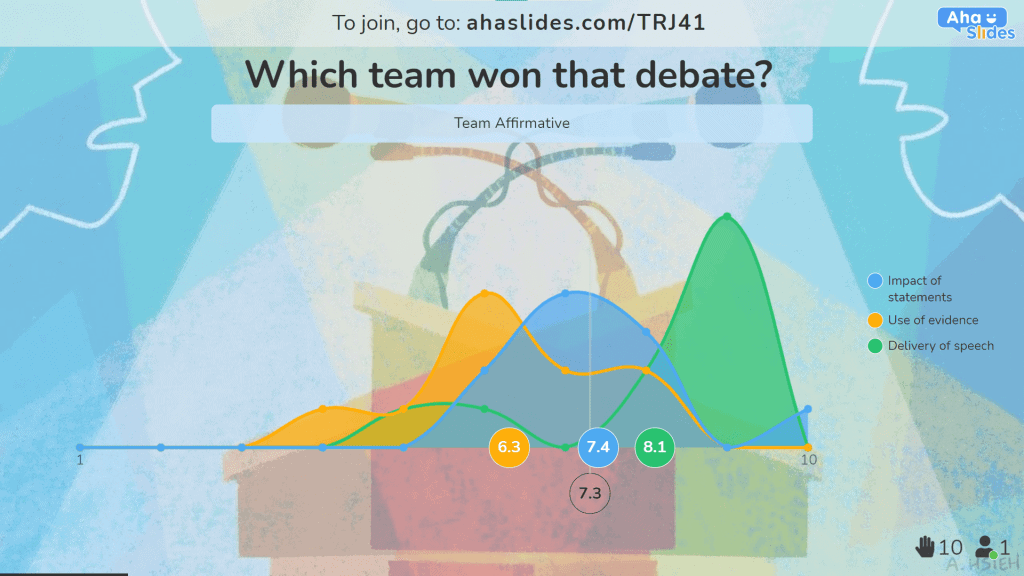
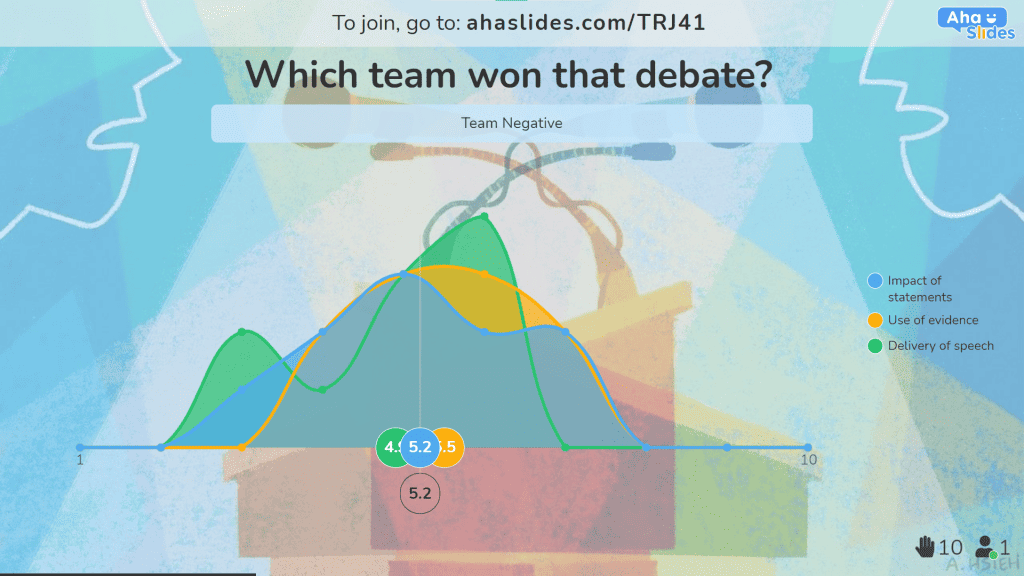
Tip #4 💡 It may be tempting to jump straight into a deep debate analysis, but this is best saved until the next lesson. Let students relax, think over the points and come back next time to analyse them.
The structure above is sometimes referred to as the Lincoln-Douglas format, made famous by a series of fiery debates between Abraham Lincoln and Stephen Douglas. However, there's more than one way to tango when it comes to debating in class:
Check out the best 13 online debate games for students of all ages (+30 topics)!
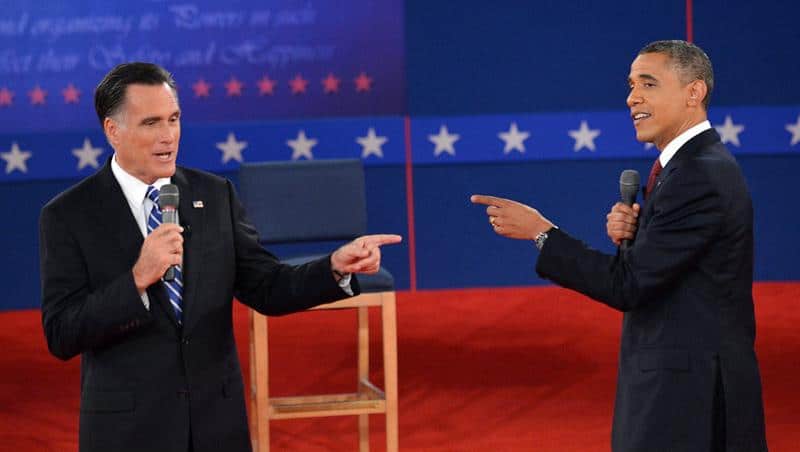
Need more ways to engage your students? 💡 Check out these 12 student engagement ideas or, the flipped classroom technique, for in-person and online classrooms!
Are you looking for some inspiration to bring your debate to the classroom floor? Take a look through these 40 student debate topics below and take a vote with your students on which to go with.
You may want to give a selection of these debate topics to your students, who will have the final say on which one to take to the floor. You can use a simple poll for this, or ask more nuanced questions about the characteristics of each topic to see which one the students are most comfortable discussing.
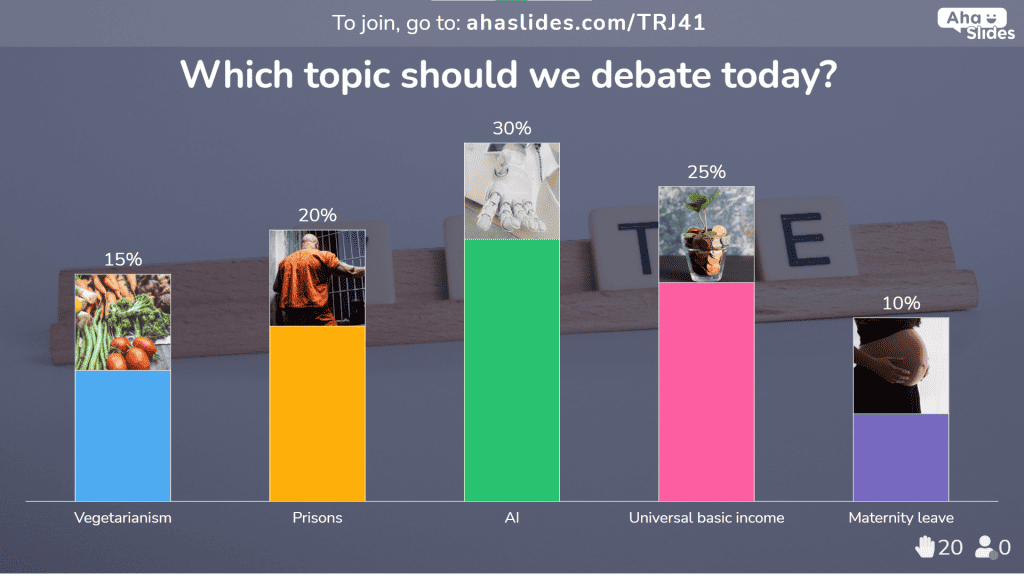
Poll your students for free! ⭐ AhaSlides helps you put students at the centre of the classroom and give them a voice through live polling, AI-powered quizzing and idea exchanging. In terms of raising student engagement, there's no debate.
We'll leave you with one of the absolute best examples of student debates from a show on the Korean broadcasting network Arirang. The show, Intelligence - High School Debate, has pretty much every facet of a beautiful student debate that teachers should aspire to bring to their classrooms.
Tip #5 💡 Manage your expectations. The kids in this program are absolute pros, and many debate eloquently with English as their second language. Don't expect your students to be at the same level - essential participation is a good start!
There are several types of student debates, each with its own format and rules. Some of the common ones are policy debate, Lincoln-Douglas debate, public forum debate, impromptu debate and roundtable debate.
Debates encourage students to analyse issues from multiple perspectives, evaluate evidence, and form logical arguments.
Provide them with reliable sources like credible websites, academic journals, and news articles. Guide them on proper citation methods and fact-checking strategies.